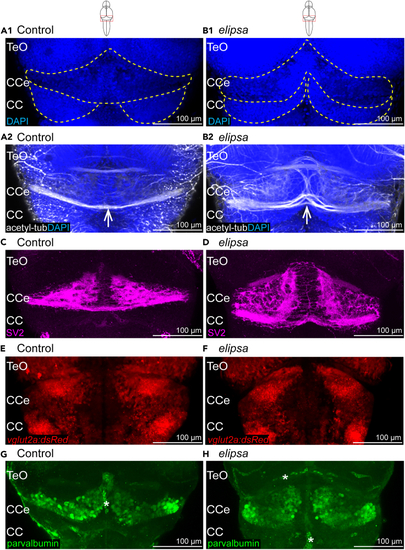Figure 3
- ID
- ZDB-FIG-240613-44
- Publication
- D'Gama et al., 2024 - Ciliogenesis defects after neurulation impact brain development and neuronal activity in larval zebrafish
- Other Figures
- All Figure Page
- Back to All Figure Page
|
Cerebellar defects in 4 days old (A1–B1) Cell nucleus stained using dapi in control (A1) and (C and D) Larvae immunostained with the presynaptic vesicle marker SV2 in control (C) and |
| Gene: | |
|---|---|
| Antibodies: | |
| Fish: | |
| Anatomical Terms: | |
| Stage: | Day 4 |
| Fish: | |
|---|---|
| Observed In: | |
| Stage: | Day 4 |

